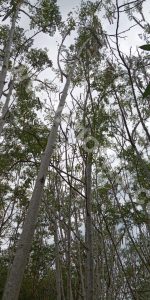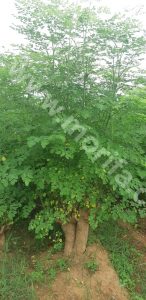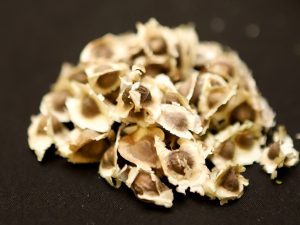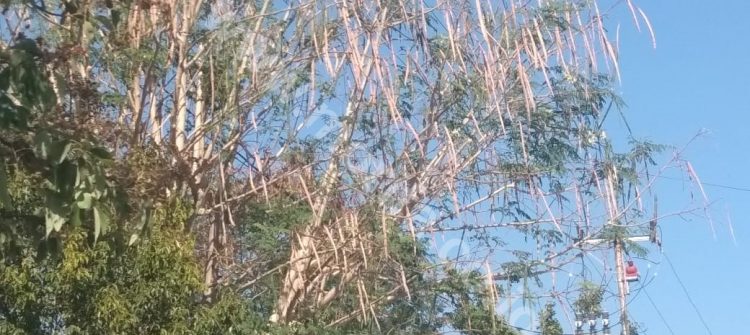The Morphology of Moringa Tree
Moringa or Moringa oleifera grows in the form of a tree. The tree can survive a long life with a height of 7-12 m. Moringa tree has wooden stems in dirty white color with thin skin and rough surface. Sympodial branches grow in the direction of upright and oblique branches tend to grow straight and elongated. Propagation can be generative through seeds or vegetative through stem cuttings. This tree can grow in the lowlands and highlands with an altitude of ± 1000 m above sea level. It is widely planted as a boundary or fence in the yard or field.
The morphology
1. Stem
The stem of a moringa tree is in the form of a white taproot. The root bark tastes and smells pungent. The inside of it is pale yellow, finely striped, but bright and transverse. The stem is not hard with irregular shape. The outer surface of the skin is slightly smooth while the inner surface is slightly stringy. The color of the wood is light brown, or fibrous beige, mostly separate. The stem has the ability to enlarge like a turnip.
The seeds that are planted will expand into weevils and swell. Moringa taproots are white and have a distinctive pungent odor. Trees grown from seed will have deep roots, forming a broad taproot and thick fibrous. However, Moringa taproots do not form on trees propagated by cuttings.

2. Trunk
Moringa is a type of herbaceous plant that can have a stem height of 7-12 meters. It is a plant with a trunk with a type of woody stem which can grow hard and strong. The shape of the trunk itself is round and the surface is rough. The direction of the trunk growth is straight up or commonly known as erectus. Branching on the trunk can be seen as sympodial branching in which the main stem is difficult to determine. This happens because in subsequent developments it may then stop its ability to enlarge itself and grow less rapidly than the branches. The direction of the branching is upright (fastigiatus) due to the angle between the trunk and the branch is very small. Thus, the direction of the branch growth at the base is slightly tilted upwards. But, it is almost parallel to the main stem.

3. Leaves
Moringa tree has compound and long-stemmed leaves. They are alternately arranged to odd leaves (imparipinnate). Young leaves are light green to dark green depending on the maturity of the tree. Moringa has oval leaf shape in 1 – 2 cm long, 1 – 2 cm wide with thin limp, blunt tip and flat edge. They have pinnate structure as well as smooth upper and lower surfaces.

4. Flower
Moringa flowers appear in the axillary leaves (axillaris). They are long-stemmed with slightly creamy white petals. The flower of Moringa gives off a distinctive aroma. The flowers are yellowish white while the sheath of the flower is green. The panicle droops 10-15 cm. They have 5 petals that surround 5 stamens and 5 staminodia. Moringa flowers come out all year with a fragrant scent.
For your inquiry about moringa oil/moringa powder :
Contact us :
E-mail: [email protected]
Phone: +6221-2903 4428
Fax: +6221-2903 4429
Sales Mobile/Whatsapp: +62813 8063 7778
Read more :

